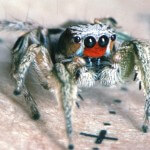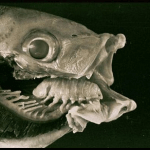Treasures: Stellar Nucleosynthesis
Most of the things in our “Treasures” series are living organisms. I think this is partly because lots of living organisms are easy to identify with: they exist on a scale similar to ours and are easy to categorize as discrete entities. Phenomena are a little harder to sell, for the most part. Stellar nucleosynthesis has had some help though, in the form of Carl Sagan’s wildly popular and surprisingly durable “star stuff” monologue. And it’s true: we’re literally made of atoms that came here from dying stars. Of course this is equally true of centipedes, norovirus and Rob Ford, so admittedly the magic relies on a bit of anthropocentrism.
Read More »Treasures: Stellar Nucleosynthesis


